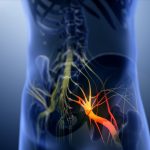Did you know that the car you drive, impacts your musculoskeletal health?
In today’s era where sitting is the new smoking, aren’t we challenging our bodies to the extremes? As professionals, we have extremely demanding work profiles and in order to be the best, we tend to subject our body to tremendous pressures.
Prolonged travel, traffic jams, type of car you are driving and increasing demands at work all together are turning out to be the major causes of health breakdown especially in the metropolitan cities and highly developed areas.
Research suggests that the car driving and cab travels are increasing day by day causing a negative impact on human body due to sitting for 1/4th portion of our entire day. Travelling by cars have today become easily accessible and is also the need of the hour. This however has led to increased physical inactivity and weakening of muscles causing imbalances and postural differences.
Here are a few postural and psychosocial hazards faced by daily commuters:
Prolonged travel
Leads to –
• Forward headed, rounded shoulders, kyphotic & S shaped postures
• Knee pain due to repetitive compressive forces on clutch and break
• Muscular aches because of overstretched arm on the steering.
• Improper hip-knee angle
• Back pain caused due to sudden jerks felt because of uneven roadways
Traffic jams
Effect on hip &spine: Sitting for extended hours causes the hip flexor complex to remain in a shortened position thereby leading to tightness in the hip flexors and weakness in the gluteal group muscles giving rise to low back pain.
Sitting inside a cab/driving a car in traffic jams causes irritation and mental stress, anxiety about reaching destination on time which in turn makes an individual underperform at work.
Types of car
Hatchback cars (Nano, Alto, etc) –These have reduced leg space causing decline in lower limb movement. Maintenance of prolonged Kyphotic posture leads to forward headedness thereby straining the cervical flexor muscles.
Sedans/SUVs (Etios, Innova, Ciaz) – Can cause back pain as the placement of gear in the left is above the hand rest and thereby leading to a constant tilting posture to the left which in turn changes the normal center of gravity of the body.
Back seaters often tend to tilt to one side in order to have a view outside the window, read books, use phones & laptops, sleep in awkward postures, nod off while sleeping in the car, etc. Any such fixed and prolonged posture cause static loading of the soft tissues and cause discomfort.
Increased work demands
Evolution of better and new technologies, performance pressure and meeting deadlines have led to an increase in working hours. A 9 to 5 shift is no more defined as an ideal shift as working late hours is the new trend. Stress and fatigue are the norm these days.
Fatigue is a likely factor in almost one third of single-vehicle crashes. Drowsy driving is suspected to be a primary cause in more than 20% of road fatalities. Most fatigue-related accidents occur during normal sleeping hours as the individual is making a sleep deprived travel.
Driving while fatigued can result in
• Slower reaction times
• Lack of concentration – errors in calculating speed and distance
• Reduced vigilance and poor judgement
• Nodding off
How to know that you are fatigued while driving?
• Yawning & Sore or heavy eyes
• Slower reaction time
• Lack of concentration
• Driving speed creeps up or down
• Impatience
• Impaired driving performance (poor gear changes)
• Stiffness and cramps
• Loss of motivation
How to overcome these issues?
• Avoid travelling for more than 8 to 10 hours at a stretch in day
• Take frequent breaks during long journey.
• Being physically active and engaged in some form of exercise.
• Frequent breaks at work like taking a stroll or doing stretches.
• Maintaining a healthy sleep cycle.
– Mrs.Snigdha Sharma, Physiotherapist


